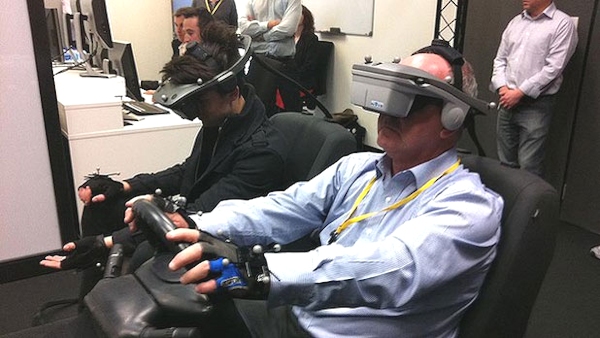[From IT Wire]
Ford Australia creates the Holodeck
Ford Australia engineers and designers are living in a virtual world, and loving it. The company has unveiled its new Virtual Reality Centre, a high tech digital evaluation and design environment
31 August 2012
By Mike Bantick
Years before a Ford vehicle shines on stage at a car show or arrives in dealer showrooms, Ford researchers are hard at work behind the scenes, building virtual vehicles that allow the company to design, analyse and enhance the driver experience before a physical vehicle ever exists.
Known as the Powerwall (Trekers would have preferred the term Holodeck, maybe next time) the new Virtual Reality Centre houses a 6m x 3m screen used to evaluated 3D models of proposed cars.
According to Ford the result is a superior mark of craftsmanship and refined finish that characterises Ford vehicles. The virtual process also speeds up production times while helping reduce costs. Using virtual reality tools, engineers and designers can make consumer-friendly adjustments before the building of a vehicle starts.
The state-of-the-art facility is the same as that developed by Ford in Dearborn. The Ford US team even received a call from NASA asking for a tour of the facility, which has resulted in on-going collaboration.
The Ford Australia VRC is one of just three in the company’s global design centres. The other two are in Dearborn, Michigan and Cologne, Germany.
“In this virtual world, we can evaluate early vehicle design and its engineering against a backdrop of virtual conditions and literally experience a complete vehicle years before it is built and a customer drives it out of the showroom,” according to Adam Frost, Chief Engineer, Global Engineering Services and APA Digital Innovation at Ford Motor Company.
“This helps us to create a car, pickup or crossover that provides the perfect environment for the driver and its occupants. From a customer’s perspective, before even out first prototype is built, this allows us to finely tune the customer experience.”
The VRC is capable of real-time image manipulation, with realistic shading, shadow generation and textural mapping.
Powerwall technology creates not only life-size static images for detailed reviews of new models but also full virtual animation shows. Operators can show the vehicle moving, the doors opening and closing, the instruments functioning and the driving controls operating.
Frost said the benefits of computer-aided design include the rapid, concurrent development and investigation of several design themes. This dramatically reduces time-to-market over the traditional, sequential clay model processes.
“Digital reviews will also allow Ford to introduce higher quality levels at earlier stages in the design and product development process,” he said.
“The virtual vehicles are built up from Ford’s own engineering and design computer files. The modelling is so accurate that you can see internal components and the even the cut-pile of an interior carpet or detailed alloy-look clutch, brake and accelerator pedals.” Said Frost.
The Ford Australia VRC is a purpose-built windowless room which contains tracking cameras and two car seats and a mock steering wheel assembly, which is called a buck. The buck sits inside a framework of 16 motion tracking cameras that respond to reference markers on the virtual reality helmets worn by those sitting in the mock car interior.
The high-tech VRC gives the Ford Australia design and engineering teams world-class status. Combined with the company’s engineering and powertrain expertise at its Campbellfield headquarters, Ford Australia is a recognised centre of excellence in the Asia Pacific and Africa region.
Ford virtual reality world even extends beyond the design and engineering of vehicles to the factory floor. Ford of Europe is developing a complete virtual factory to simulate the end-to-end assembly line production.
Virtual factories will enable Ford to preview and optimise the assembly of future models at any of the company’s plants, anywhere in the world.
The company’s Valencia plant, in Spain, is taking the lead in developing virtual factory environments, which have the potential to enable remote evaluations to be conducted from around the globe.
Special projectors and polarising, motion-sensing glasses are used to create interactive 3D virtual reality manufacturing scenarios.
The actions required by real-life assembly line operators are simulated inside these environments to help Ford ergonomics experts eliminate strenuous postures and optimise individual aspects of the assembly process.
Ford’s ergonomics experts in Cologne, Germany, use computer simulations to scrutinise the fitment process for even the smallest components, and analyse whether changes are required to make the task as straightforward as possible for the assembly-line operator.
Virtual employee “Jack” can simulate the actions of both male and female assembly line employees to test and evaluate processes in fine detail, right down to the manoeuvrability of the operator’s fingers within an enclosed space. “Jack’s” advanced software evaluates the demands on the real-world operator and uncovers 80 per cent of assembly process ergonomics issues at the simulation stage.
Interested in the computing power required to run the Virtual Reality Centre? Click on to the final page [at IT Wire].
